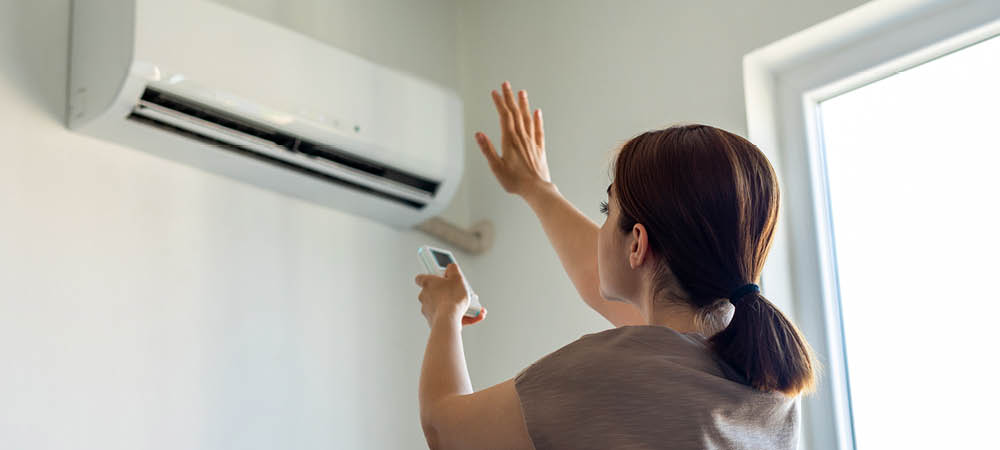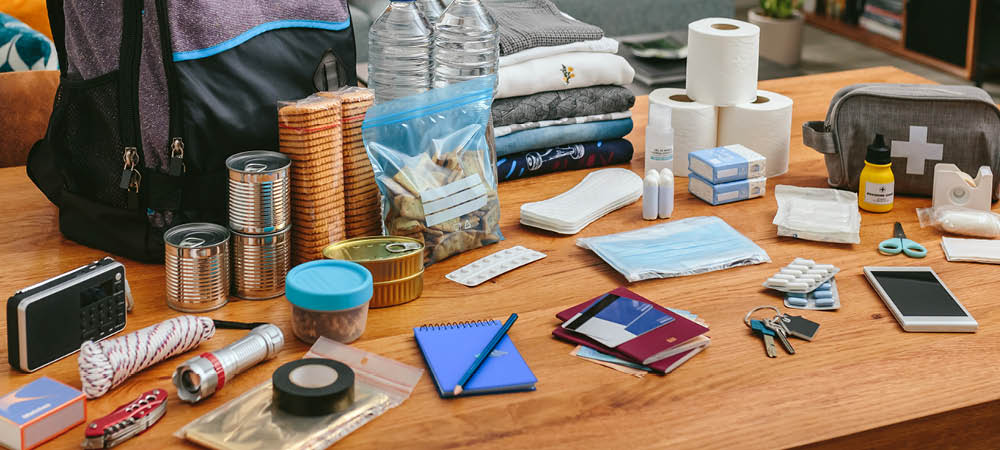Love it or hate it, winter reliably arrives in Canada every year, bringing with it snow, ice, salt, cold and wind – although the timing of the first cold snap or snowfall can vary significantly! Because winter can set in any time from late October to early January, being prepared for the season requires some advance planning – planning that can save you money, increase your comfort and prevent potential problems in your home during the cold months.
Your home in winter
In the colder months of the year, your home is your haven, providing warmth, comfort and respite from the elements. So, it’s important that it is well-prepared for the ultimate layers of snow and ice that can settle around it, and the below-freezing temperatures that arrive with the season.
Whether you own a condo apartment or house, here are five steps to take to help you get your home ready for winter.
Inspect and seal windows, walls and doors
Your windows, walls and doors are areas of vulnerability in your home – it’s where insects and warm air can penetrate in the summer months and cold air can seep through in the winter. When windows and doors aren’t properly sealed, it makes it more difficult to regulate the temperature in your home and you will spend more energy (and money) to heat it. What’s more, if ice and snow settle into cracks, moisture and mold can build up in and around doors, walls and windows, which can cause them to warp. Here’s how to inspect these areas, increase efficiency and slow down deterioration:
|
|
Check for air flows and leaks around all your windows, walls and doors |
|
|
Seal any gaps to improve insulation, prevent heat loss and reduce energy costs |
|
|
Add draft stoppers at the bottom of doors to keep cold air out |
Check your heating systems

Because cold weather can set in unexpectedly, your furnace (or other heating system) may get called upon sooner than anticipated. For this reason, it’s wise to get it tuned up well in advance of the winter. A pre-season check-up can catch any small problems before they develop into bigger issues, remove dust build-up and lubricate parts for better operation and efficiency throughout the season.
|
|
Schedule an inspection for your furnace or other heating system |
|
|
Replace air filters to ensure better air quality and airflow |
|
|
Consider installing a smart thermostat to optimize your heating schedule even when you’re not at home |
Check and test your smoke and carbon monoxide detectors
When temperatures start to drop, our homes become more closed to the outside air. This reduced ventilation can lead to an increased risk of fire and carbon monoxide buildup. While it’s important to test smoke and carbon monoxide detectors throughout the year, checking these devices as part of your pre-winter checklist is an essential safety measure.
|
|
Replace the batteries in each smoke and carbon monoxide device (this should be done twice per year) |
|
|
Press and hold the test button and make sure the sound can be heard from the farthest point in your home |
|
|
Test both smoke and carbon monoxide detectors and ensure your family members can recognize the distinct sounds of each |
Prepare your plumbing
When winter gets particularly cold, freezing temperatures can cause your pipes to freeze or malfunction. Preparing your plumbing system for winter can save you a great deal of hassle and money as a burst pipe can lead to extensive – and expensive – water damage. Here are some important steps to take:
|
|
Insulate pipes that are in unheated areas such as a crawl space, garage or attic |
|
|
Open your outdoor faucets to allow excess water to run out, then turn off the faucet at the shutoff valve to keep them from freezing |
|
|
When the weather is especially cold, open your under-sink cabinets (i.e., in the kitchen or bathroom) so that warm air from your home can circulate near the pipes |
|
|
Look for cracks around the outside of your home. If cold air seeps through them, your pipes are at risk of freezing – spray foam or caulking can fill the gaps and protect your pipes |
Assemble a winter emergency kit

From extensive snowfalls to damaging ice storms to high winter winds, winter weather brings with it a chance of power outages. Having an emergency kit on hand is an important step – it should include sufficient essentials to sustain you and your family for 72 hours. Here’s what to consider:
|
|
Assemble essentials such as flashlights, blankets, non-perishable food, bottled water, a battery-powered radio, essential medications and more |
|
|
Include a list of important contacts, including utility companies and emergency services |
|
|
This is also a great time to take care of other emergency scenarios. Having your Will and insurance up-to-date, as well as establishing an emergency fund can give you peace of mind that you and your loved ones are protected against unexpected events |
For house owners - Protect your garden and outdoor furniture
Your deck, patio and garden are important extensions of your home – and you’ll want to protect them from the winter elements.
Outdoor furniture can be a fairly big investment and you want to make sure it lasts for several years. Taking care of your furniture will extend its life and keep it looking great in the meantime.
When it comes to your garden, there are two areas of focus: to protect your plants and protect your home from loose or falling branches.
|
|
Store or cover outdoor furniture. If covering, make sure it’s fully dry before you seal it up |
|
|
Store cushions in a sealed, dry location. You want to keep both the elements and the rodents away |
|
|
Trim trees and bushes away from your home to prevent damage from branches |
|
|
Apply winter fertilizer to your lawn to promote healthy growth in the spring |
|
|
Wrap plants and trees that have been recently planted, as well as any that are right next to heavily salted roads or sidewalks |
Before winter sets in, it is the perfect time to tackle preventative maintenance jobs that keep your home safe, secure, and comfortable in winter. Once the weather begins to warm up, you can take on renovation projects that will revitalize your space and potentially increase your property’s value. Once you’ve run through the steps in your checklist and prepared your home for winter, why not start planning for spring projects? The winter is a great time to dig in and make plans!
Homeownership comes with its share of responsibilities and to-dos. MCAP is here to help you navigate through the different stages of owning a home. Take a look at our other blog articles for more tips, or contact us if you have questions about refinancing your mortgage for home maintenance and preventative projects.




